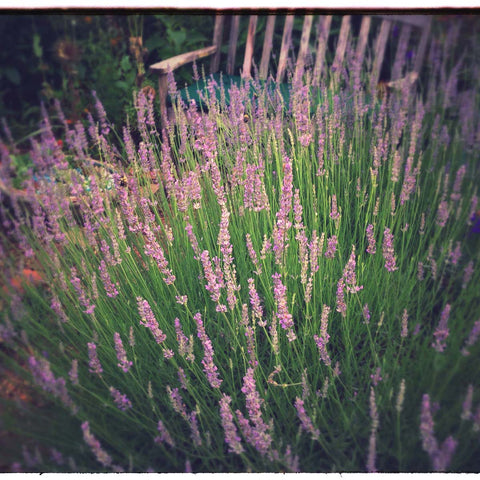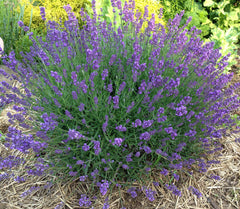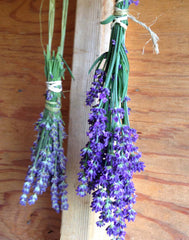Lavender is one of my favorite herbs to grow in the garden. The pathway to my herb garden bench is lined with Lavender 'Provence'. The plants reached shrub like proportions this summer and almost made it impossible to even get to the bench. Lavender can be slightly tricky to grow so I will share some of the things I have learned through trial and error.
Lavender is often considered and old fashioned herb. It has been used to scent soap and bath products since ancient Greek and Roman days. In the language of flowers Lavender is said to soothe troubled hearts and troubled minds. The fragrance does vary between the different types of lavender. The fragrance of Spanish Lavender, Lavandula stoechas is almost camphor like but I love the rabbit eared flowers of this variety. English Lavender, Lavandula angustifolia has the classic lavender fragrance and the flowers are especially good for drying. 'Provence' Lavender is Lavandandula x intermedia and has lighter gray foliage and tall, thin flower wands. I haven't had great luck drying the flowers of this variety but it is still my favorite. The Lavandula intermedia varieties are very good for hot, humid regions. I had trouble growing Lavender in Georgia until I discovered this cross. Both 'Provence' and 'Grosso' are great varieties.
Lavender is a Mediterranean native that grows best in full sun and very well drained soil. Sharp drainage is critical, especially during the winter, for all varieties of lavender. We have had severe drought here in Arkansas for several summers and my lavenders have really thrived. I cut the first flush of flowers for drying purposes. This also gives me a second flush of flowers. The second crop I leave on the plant to harvest the seeds at the end of the growing season. Lavender can be started from seeds and this may be the most economical if you want a large number of plants. Lavender does require a few weeks of cold stratification but it is not difficult. Plants started from seed usually won't bloom until the second year.I do have seeds from the plant above included in my lavender seed kit.

English Lavender and the intermedia varieties are hardy in zones 6-9. I find winter wetness will take them down quicker than anything. My plants look very ratty by the end of the winter. Resist the urge to tidy up the plants in very early spring. This is my biggest Growing Great Lavender tip! Once the weather has warmed up, this is usually April in my area, look at the base of the plant for new leaf shoots. You will see the silver foliage starting to pop out along the stems. The plants need all of this new energy to help them start growing again. If you chop it off before the plants have begun to flush out they won't have enough stamina to fully leaf out. Once the leaves have fully emerged you can shear the plant back. This is what gives them a full bushy appearance.


